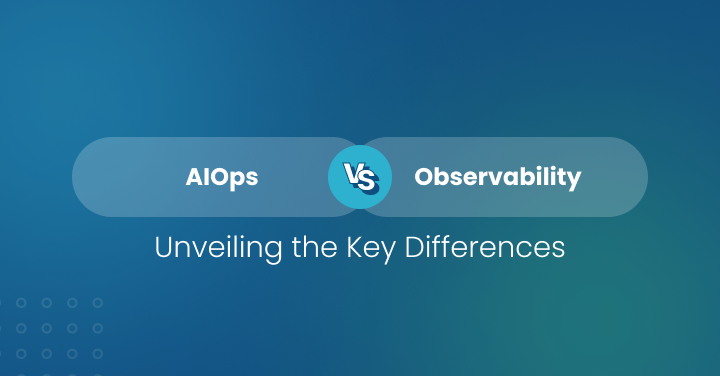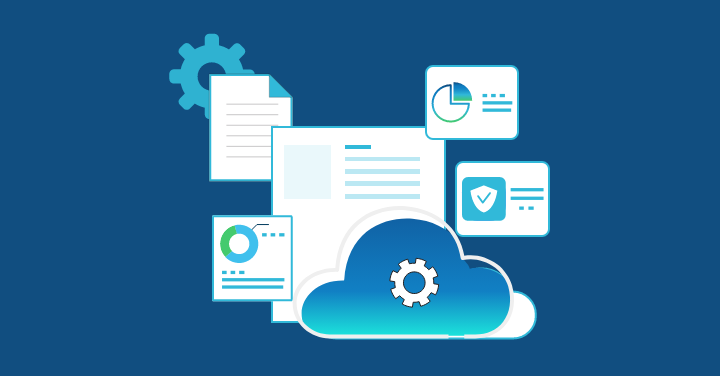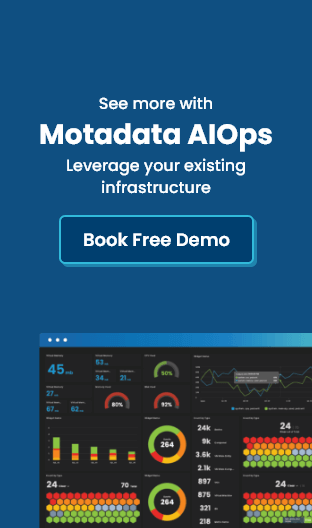Take any bustling financial hub in this world — Mumbai, New York, Tokyo, London, Dubai…
Traders run transactions worth billions of dollars every minute. ATMs dispense cash, mobile apps manage credit and debit to personal and business accounts.
Within such environments, even a microsecond of network downtime can cost BFSI (Banking, Financial Services, and Insurance) institutions massive financial losses.
“…one minute of downtime costs the average firm a staggering $9,000. Extrapolate that to an hour, and you’re looking at a jaw-dropping $500,000. These aren’t just numbers; they represent the immediate loss of revenue, recovery expenses, investments in remediation efforts…”
To prevent and manage such disasters, modern BFSI environments — hybrid IT architectures blending legacy on-premises infrastructure with private and public clouds— need enhanced network monitoring. Traditional monitoring systems alone have too many data and functionality gaps to cover all use cases.
The inevitable answer is evolution.
And, evolution looks like AI & cloud integration.
Why Traditional Network Monitoring Falls Short in BFSI
Hybrid BFSI networks, i.e., the ones used in 2025, comprise some complex ecosystems with interdependent components:
- Core banking systems (CBS) hosted on legacy infrastructure.
- Customer-facing digital platforms like mobile banking apps and online trading portals.
- Third-party integrations (KYC, AML, payment gateways).
- Distributed edge devices (ATMs, POS systems).
Traditional network monitoring tools are primarily rule-based and reactive. They cannot deliver the overarching visibility and predictive insights needed in the aforementioned environments.
Monitoring tools in this range trigger alerts based on static thresholds, which makes alert fatigue and slow incident resolution a regular issue.
Forrester reports that 56% of BFSI firms have adopted at least one public cloud service. Cloud-based components bring with them variables like dynamic IP addressing, containerization, and auto-scaling – all beyond the pale of legacy monitoring tools. This shift toward Cloud Banking infrastructure enables financial institutions to scale resources dynamically while maintaining the security standards required for customer data protection.
Other limitations include:
- Legacy tools can’t always offer the unified view needed to monitor on-premise and cloud resources. This results in blind spots and slow response to critical incidents.
- Cloud components often scale up and down, and legacy tools cannot accurately track resource changes and performance metrics across the many transitions.
- Traditional tools don’t have the audit features and coverage capabilities needed to comply with stringent data protection, audit, and reporting requirements.
- Most legacy tools cannot scan for, identify, and address modern-day cyber threats that keep evolving.
Why BFSI needs to move to AI-Driven Network Monitoring
AI-powered network monitoring addresses every challenge mentioned above. It utilizes advanced analytics, machine learning, and process automation to deliver a range of industry-specific features:
AI platforms like Motadata AIOps are designed to consolidate logs, metrics, and traces from all on-premises, cloud, and hybrid assets in the network. It provides instant end-to-end visibility into processes/components as well as quicker root cause analysis.
Similarly, AI Phone Calls can automate customer interactions and improve efficiency in the BFSI sector by ensuring faster response times and reducing human error.
Machine learning engines are configured to continuously analyze network traffic and user behavior, scan it for anomalous behavior, and detect potential threats as soon as they occur.
AI engines can examine historical data to predict equipment failure, security breaches/incidents, or network congestion. It posits teams in a preventive position, rather than reactive.
AI-ML systems can initiate automated workflows at the right triggers, taking immediate responsive action — rerouting traffic, isolating compromised assets, or rolling back faulty configurations.
Tools running AI models can scale monitoring capability perfectly in line with the growth in assets, transactions, and complex networks of an evolving BFSI network.
AI frameworks process massive volumes of real-time data across hybrid environments to detect anomalies beyond just pattern recognition and set baselines for user behavior.
Key Components of AI-Powered Network Monitoring
Any AI-run network monitoring system comprises the following operations:
Data Collection and Aggregation
The tool ingests vast volumes of structured and unstructured historical data from various network endpoints and assets — network devices, application logs, cloud APIs, etc. This resulting data lake is the foundation for enhanced analysis and appropriate insights.
Real-Time Analytics and Alerting
AI tools run continuous analyses of existing systems, immediately detecting performance degradation, security breaches, or compliance violations. Alerting triggers can be configured to prioritize critical incidents, reduce alert fatigue, and ensure timely response.
Predictive and Prescriptive Insights
AI-based monitoring platforms predict future issues, recommend optimization steps, and trigger corrective steps. They can automate scans for compliance violations, build audit trails, and highlight policy violations in hybrid environments.
Real-World Benefits of AI-Driven Network Monitoring for the BFSI Industry
Downtime Prevention
As mentioned above, AI can analyze historical performance data and real-time user traffic. It can predictively maintain network health and proactively identify potential bottlenecks and threats.
The cost of downtime for Financial Services organizations is $152 million annually.
AI tools can easily automate RCA (root cause analysis) by correlating telemetry data (e.g., logs, metrics, events). IT teams can solve incidents faster, which reduces MTTR (Mean Time to Resolution).
This minimizes downtime and saves associated costs.
Enhanced Customer Experience
AI-driven monitoring can keep up with the needs of a sector in which milliseconds can change lives. It can triangulate and find any deviations from performance benchmarks.
The result is seamless digital banking experiences, real-time payment processing, uninterrupted trading activities, and high customer satisfaction and retention.
Dynamic Resource Optimization
AI models can continuously optimize the allocation of network resources in response to real-time demand. This is especially helpful during peak usage (payroll processing, end-of-quarter reporting), as it keeps critical banking applications performing at acceptable levels.
Improved Security Posture
Monitoring systems enhanced with AI can identify any anomaly in network behavior. Often, these anomalies indicate security breaches or threats of data theft.
The AI engine scans performance and security metrics. BFSI firms can predict attacks, improve cyber resilience, and maintain high levels of operational efficiency.
Compliance and Audit Readiness
AI-powered monitoring tools are pre-set to create automated reports that already match regulatory requirements — PCI DSS, GLBA, and local data protection laws — in the BFSI domain.
Such reports automatically perform continuous compliance checks and reduce the need for manual audits and possible legal repercussions.
Cost Savings and ROI
Fewer unplanned outages = optimized resource usage = reduced operational costs. AI-run network monitoring directly contributes to maximizing ROI and positively impacting revenue.
Enhanced Collaboration Across Teams
AI engines can integrate their insight into ITSM and AIOps workflows. This enables cross-functional teams such as IT, compliance, and security to find and prioritize incidents that disrupt critical functions.
Best Practices for AI + Cloud Integrated BFSI Network Monitoring
Successful implementation of AI-driven and cloud-based monitoring solutions depends not only on technical deployment but also on a 360-degree approach covering and considering security, compliance, and user experience. For teams starting to transform their BFSI networks with AI and cloud-based upgrades, the following practices are ideal:
Embrace Banking Domain Application Testing
Digital-first BFSI apps are interconnected; core banking systems are closely intertwined with mobile apps and third-party integrations.
This is why teams need banking application testing. Its protocols and analyses ensure that the app can:
- simulate high volume transactions to check if the monitoring tools can scale to meet the pressure of peak usage — payroll cycles, end-of-quarter transactions, etc.
- meet compliance requirements for regulations like PCI DSS and GLBA by securely handling sensitive customer data.
- manage low latency levels and prevent service disruptions in end-to-end customer operations.
- integrate smoothly with existing apps and legacy banking platforms.
Prioritize Predictive Analytics
Go beyond reactive monitoring via embedding predictive analytics. Instead, teams should use historical performance data and real-time telemetry to estimate potential issues like network congestion or payment gateway overloads.
Integrate with ITSM and AIOps Workflows
When AI-driven monitoring tools integrate with ITSM (IT Service Management) and AIOps platforms, they can:
- automate ticket creation when incidents occur.
- map performance issues to changes in protocols, codebase, or operational nuances.
- use automated playbooks for faster incident resolution.
Establish Continuous Compliance
To comply with a complex network of regulations — from PCI DSS for payments to GLBA for data privacy. AI-based monitoring tools have to account for these and incorporate:
- automated compliance reports that help auditors do their job.
- integrated security features that keep customer data safe — data encryption and access controls native to cloud platforms (AWS, Azure, GCP).
- continuous monitoring for anomalies that can lead to security threats.
- compliance as an ongoing operational necessity, rather than a checkbox exercise.
Final Thoughts
BFSI sits at the intersection of technological innovation and customer expectations. In this domain, even a few moments of downtime can lead to millions in losses. Additionally, regulatory requirements continue to evolve, and legacy network monitoring tools cannot keep up.
AI-driven, cloud-native network monitoring tools move BFSI teams from reactive firefighting to proactive prevention of issues. It pushes faster resolution, improves SLAs, and meets customers’ expectations more closely.
However, to gain these benefits, BFSI leaders must think beyond “plug-and-play”. It starts with comprehensive banking application testing to check an app’s ability to integrate with necessary frameworks, as well as security, performance, and customer trust at every touchpoint.
Stop thinking of network monitoring as a backend IT function, and look at it as a strategic enabler of customer loyalty, regulatory resilience, and revenue growth in a hybrid world.
FAQs:
AI uses machine learning to find anomalies, forecast failures, and automate root cause analysis. It brings about a proactive approach that minimizes downtime and sets out seamless banking operations.
Cloud integration for network monitoring offers much-needed scalability, agility, and a unified view of hybrid BFSI environments. It delivers real-time insights and integration with the existing network assets.
AI-powered monitoring systems can be configured to study compliance policies and automate reporting. Once the AI engine understands data protection standards like PCI DSS and GLBA, it can scan processes and documents to flag any violations.
Rigorous banking domain application testing ensures that monitoring solutions perform optimally and comply with BFSI-specific needs. It takes care of performance validation, security & compliance assurance, interoperability testing, and customer experience optimization.






